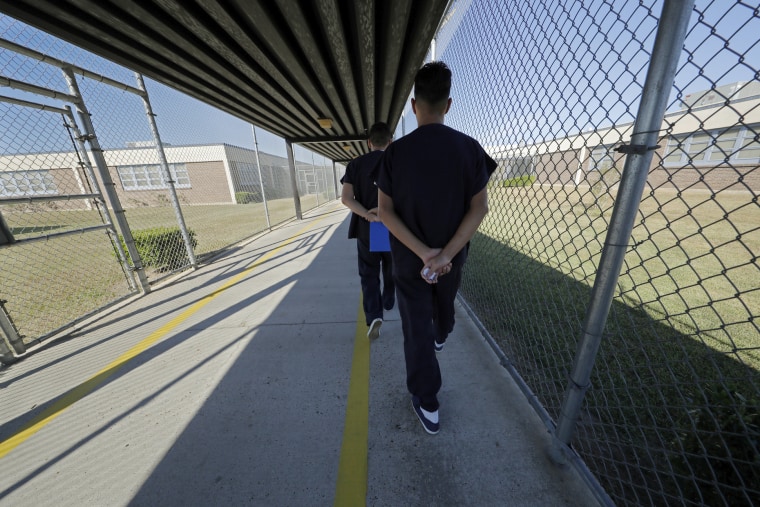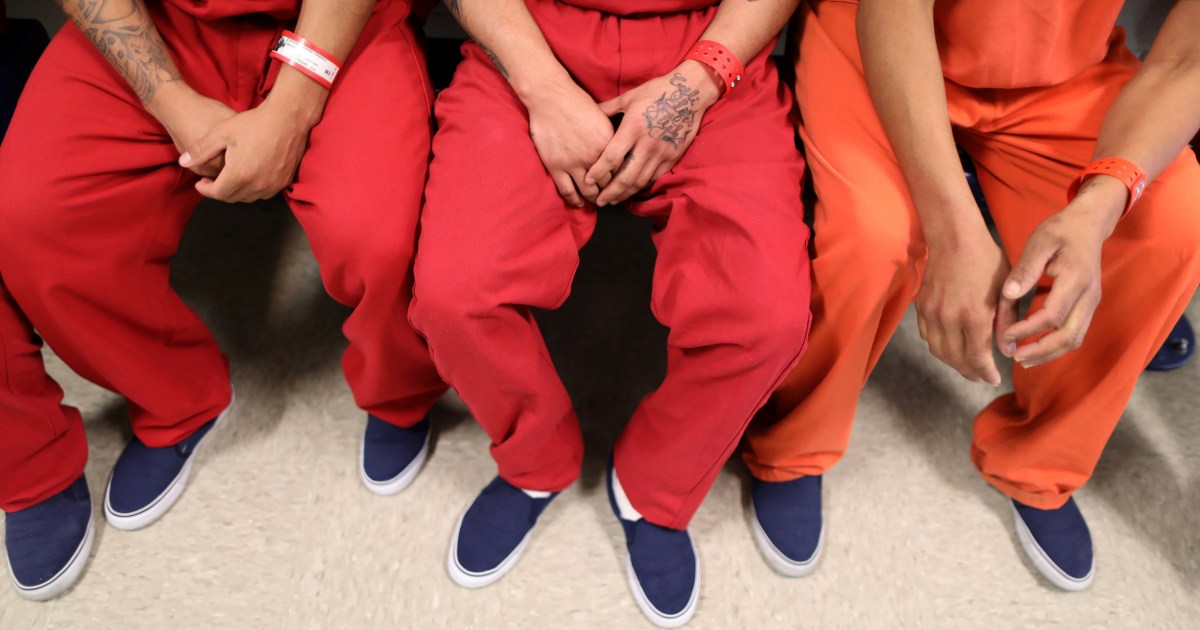Ten people have died while in Immigration and Customs Enforcement custody so far this fiscal year, more than twice as many as last year and three times as many as the year before, according to ICE data and news releases.
There have been more deaths in the first eight months of the current fiscal year, which ends Sept. 30, than in all 12 months of five of the six preceding years. The only fiscal year for which the 12-month total exceeds the current tally is 2020, during the height of the Covid pandemic. That year, 21 people died while in ICE custody. That compares with four in 2023, three in 2022, five in 2021, eight in 2019 and six in 2018.
An ICE spokesperson said in a statement to NBC News that it “takes very seriously the safety of those in its custody and remains committed to ensuring that all those in its custody reside in safe, secure, and humane environments.”
“Comprehensive medical care is provided from the moment individuals arrive and throughout the entirety of their stay,” the agency said in the statement, as well as in previous statements following detainee deaths. “All people in ICE custody receive medical, dental and mental health intake screening within 12 hours of arriving at each detention facility, a full health assessment within 14 days of entering ICE custody or arrival at a facility, and access to medical appointments and 24-hour emergency care. At no time during detention is a detained noncitizen denied emergent care.”
The agency also said that its ICE Health Service Corps “executed an operating budget of nearly $324 million on the spectrum of healthcare services provided to people in ICE custody in fiscal year 2022.”
Two of the deaths in the current fiscal year occurred on consecutive days last week, according to statements from ICE.
Hugo Boror Urla, a 39-year-old Guatemalan migrant in ICE’s custody, died May 22 at a Michigan hospital, according to an agency statement last week. He had been in ICE custody, detained at Calhoun County Jail in Battle Creek, Michigan, for about a month before he died, according to the statement. Border Patrol had encountered Boror Urla on April 17 near Taylor, Michigan, and served him with an order of expedited removal from the country, ICE said.
ICE’s statement did not provide additional details about Boror Urla’s health or hospitalization and said an official cause of death is pending.
An official cause of death is also pending for Cambric Dennis, a 44-year-old man from Liberia who died in ICE custody in Georgia on May 21, according to the agency.
Dennis, who had entered the U.S. legally in 1997, was booked into ICE’s Stewart Detention Center, in Columbus, in late October 2023, as he awaited removal proceedings after being convicted of an aggravated felony related to controlled substance trafficking, the agency said.
The two men are among six who have died in ICE custody since January, according to ICE.
The ICE average daily population for this year is 37,835, according to the agency. That compares with 28,289 in fiscal year 2023 and 22,578 and 19,254 in fiscal years 2022 and 2021, respectively, according to ICE.
In fiscal year 2020, when 21 people died in ICE custody during the height of Covid, the average daily population was 33,724.
In fiscal year 2019, when eight people died, the average daily population was 50,165.
Immigration advocates have decried what they say are ongoing human rights violations inside privately run ICE detention centers and called for increased accountability and transparency following deaths in the agency’s custody.
They have also called for ICE to release detainees who have health issues and potential sponsors in the country while their immigration cases play out. Advocates have also called for specific detention centers that have been hit with multiple allegations of such human rights violations and other inadequate conditions to be shut down.
The recent number of deaths has been “appalling,” said Azadeh Shahshahani, the legal and advocacy director for Project South, which advocates for social justice issues, including immigration rights, in the South.
“President Biden had promised that he would take some action around privatized detention of migrants, and instead they have seen nothing,” she told NBC News on Thursday. “What we have seen is ongoing abuse, ongoing human rights violations and ongoing deaths.”
“It’s a cause for real concern,” she said.
An ICE spokesperson said this month that “the use of private detention contractors is a vital piece of the national detention system enabling ICE to successfully execute its mission.”

“The ability for the agency to remove individuals to their home countries, hold those in custody who require detention and are a public safety threat is directly dependent on location and availability of detention space,” the spokesperson said.
Earlier this month, immigrant rights advocates held a small candlelight vigil outside ICE’s New Orleans field office for a man who died in Louisiana in late February and others who have died in ICE custody, using the opportunity to call on the federal government to cut ties with troubled detention centers. Ousmane Ba, a 33-year-old man from Senegal, died Feb. 23 after being hospitalized for nearly a month, according to a statement from ICE.
He had been detained at the Winn Correctional Center, in rural Winnfield, since early September, after entering the United States in late August, ICE said in a Feb. 26 statement.
“There will be another death. It’s only a matter of time,” Sarah Jones, the co-chair of the organizing committee of the Southeast Dignity Not Detention Coalition said during Ba’s vigil held just over a week before Boror Urla and Dennis died.















